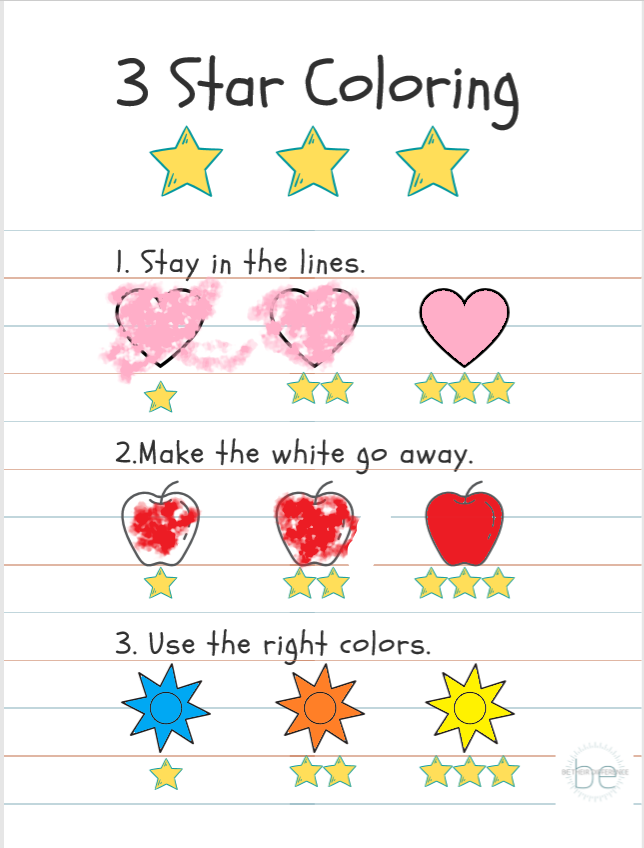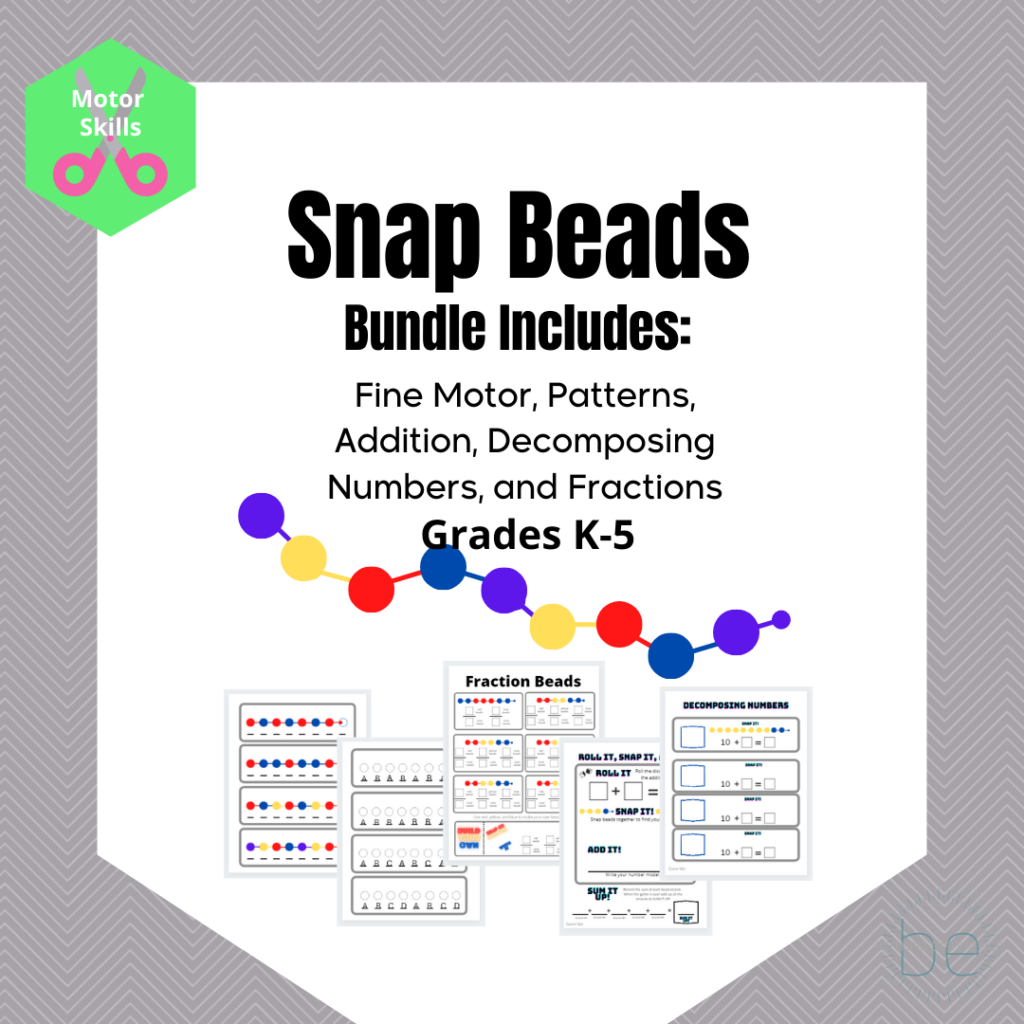We can make a difference in our student’s confidence, coordination, and ability to achieve academic success through developing their fine motor skills.
Teachers and parents of young children need to know this!!!!
Your student’s motor skills are still developing. Whether they seem right on track or have motor skill delays, your child will gain from developing these skills. We can do lots of really fun activities to promote the development of these skills!
1. Do-The-Dough
I CANNOT SAY ENOUGH HOW MUCH PLAYDOUGH (homemade or store bought) WILL HELP DEVELOP YOUR CHILD’S FINE MOTOR SKILLS.

That’s right! Do-The-Dough EVERYDAY!!!! Kids love it! I know, parents, it can be a bit messy, but listen, there are trick that will help your daily dough play easier! I feel your pain! I hate cleaning up the little tiny bits that are left on the floor. But it’s soooooo worth it!
Working dough with your hands will build so many muscles in the arms, wrists, hands, and fingers. But, believe it or not as much as kids love it, they still need to be taught some simple tricks of the trade.
Click here for link to playdough toys and tools.
What to teach your kids about playing with play dough:
How to roll a snake– There are two ways to roll a snake of play dough. First with both hands, holding the dough between your hands. The second way is to roll the dough on the table. Roll the snake and use them to form letters, numbers, shapes, sight words, etc. You can also have your student use scissors to cut the snakes into little piece to work those scissor skills! Get your free playdough mats here or checkout other fine motor tools here.
How to put it away– Tap, tap, tap is step one! Tap all the little crumbs on the table to get them all up. Next, roll it into the shape of an egg and drop it in the container. DO NOT PUSH IT DOWN TO THE BOTTOM. This will make it easier to get it out the next time you use it. Last, teach them how to use a little hand held broom to sweep up the pieces on the floor.
DON’T EAT IT!!! – LOL!!! I know right, you laugh! You laugh, because YOU KNOW THEY WILL! In fact, chances are you’ve tried it! You know there are many edible dough recipes out there to use for your kids who like to put things in their mouths.
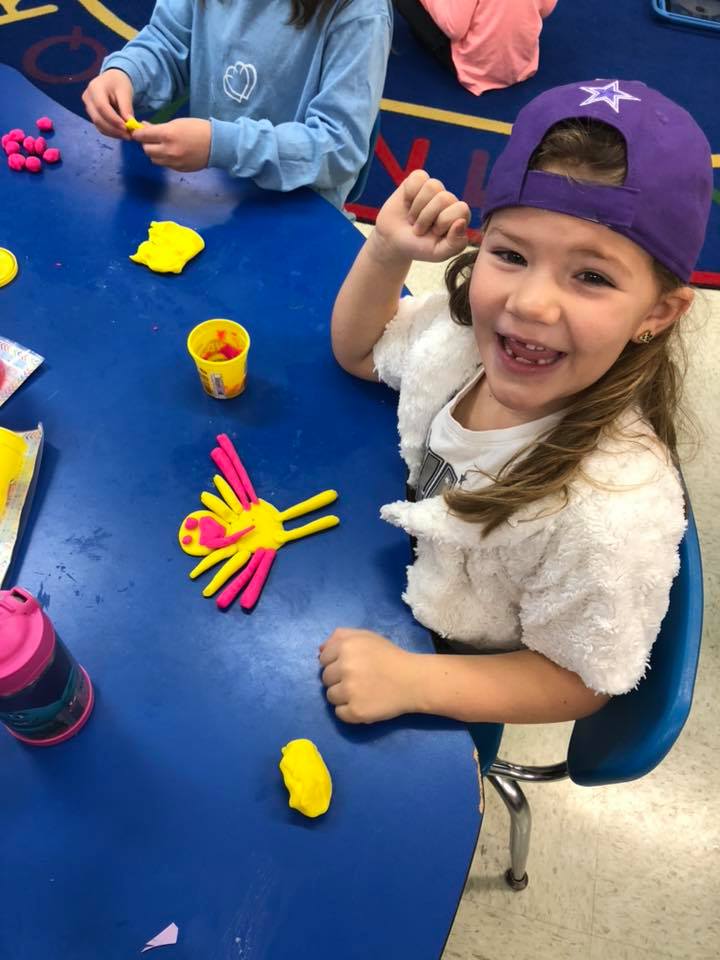
Teachers…make playdough a staple in your class! You can use it in any content area! Get creative and work those fine motor muscles, while they learn!
Sometimes I will set out play dough to start my writing center. The kids create and then write about what they made!
2. Coloring Contests
Teachers, I know that you know this already, but kids do not color like we did when we were younger. Kids need to have time daily to just color. At home and at school.
Let’s face it, when we pass out a coloring page, to us we think it is just busy work to occupy their time so that we can get work done. But hear me on this one, When you tell them it’s a contest…they work hard and take their time! Also, I have found that if you color with your kids, they will benefit in so many different ways.
How coloring will benefit your kids:
- Attention Span– Coloring requires time. It’s no secret that the attention span of kids today is shorter than that of kids decades ago. The pace of life and the speed of screens (video games and cartoons) has drastically quickened. There was a study done that suggested that today’s cartoons vary in how they affect a child’s ability to attend to a task. You can read a study here that tested this theory using the shows Spongebob Squarepants and Caillou.
- Quality over Quantity– Teach them how to color!!! I cannot stress this enough. If you teach a primary grade, DO NOT assume they know how, AND TEACH IT! You can click here to see an anchor chart that you can make that shows 3 simple rules for 3 Star Coloring. If you already do something like this I applaud you!
- Fine Motor Skill Development-The actions and precise grip used for coloring can help develop the muscles of the fingers, hands and wrist
3. Snap Cubes

There are many different types of snap cubes. Often times you will get snap cubes with your district’s math curriculum. If not your can order them here for a very reasonable price.
Teachers, if you are not using snap cubes…GET SOME! They make learning in the regular content areas so much fun! They provide and tactile and visual way of learning. They can be used to in all grades for sight words, spelling words, math concepts, and creativity. Check out my pinterest board on Motor Skills here to get some great ideas!
4. Bubble Wrap
YES!!!! WHO DOESN’T LOVE TO POP BUBBLE WRAP!!!! You can use bubble wrap of all sizes to work those motor skills! You can use the biggest bubbles to jump on for gross motor, medium size and smaller size to pop with your finger tips.
I keep a bin of bubble wrap for kids to sit and pop when they are done with an activity!
You can just pop for fun or you can add an element of learning to it. Here a teacher wrote sight words on each bubble. If they could read it, they could pop it!

5. Snap Beads

Raise your hand if you had snap beads as a kid? Mine had all different shapes! They come in many different sizes, shapes, themes, and colors. I bought this set here, for my class.
These can be used to show patterns, decomposing numbers, adding up and down, and just for fun! We can work their little fine motor muscles while learning with snap beads.
In this picture the kids were rolling a dice with +/- to see who could build the longest strand.

6. Light Bright
Pushing tiny pegs into a little hole is basically the definition of working small muscles in your hands wrists and fingers. This makes a great free choice center or word work center. You can also use it as an incentive for getting work done. The kids think they are just playing! I ordered a couple of these for my class.
7. Scissors
Using scissors the right way is something that many kids cannot do when they come to school. Their motor skills are not strong enough to manipulate the scissors yet. Cutting also requires coordination because the child has to hold and move the paper they are cutting while using the muscles in their other hand to manipulate the scissors.
We need to TEACH our students the proper way to hold them. Now this may seem silly, but believe me, they need this lesson! Below is what I have always taught my kindergarteners…I think the older kids could use a reminder too!!!
- HOW TO HOLD THEM WHILE CARRYING- pointy end down and held in fist. This way if the student would trip and fall the sharp end is not going to stab anyone! Also it allows them to hand them off to somebody safely.
- THUMBS UP- Whichever hand they use…while cutting, the thumb is always on top!
- SHARP END POINTS AWAY- While cutting the sharp end of the scissors should always be pointing away from you. Use the other hand to turn the paper you are cutting rather than turning the direction of the scissors.
8. Hole Punchers!!!
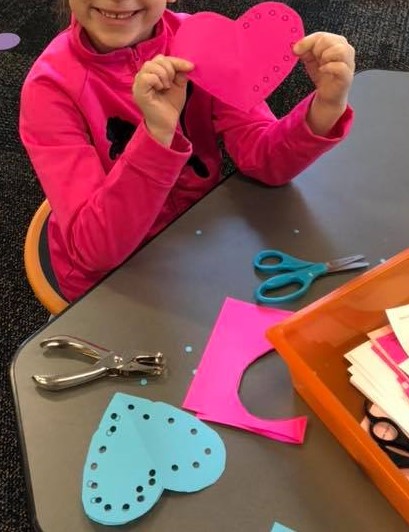
Give your kid a hole puncher, and they will work those hands until they are tired! Kids love cool tools and gadgets! Kids will punch holes in paper until the cow’s come home. SERIOUSLY, if they are able to use them, they will love them.
Pinterest is full of ideas for fun ways to integrate hole punchers into learning. Click here to view some great ideas for using a hole puncher to strengthen and develop your student’s fine motor skills. However, the truth is, you don’t really need anything creative at all. Just provide paper and punchers!
I ended up purchasing a couple alternatives to the basic hole puncher. One is a set of punchers that punch out fun shapes. You can find them here. The set of fun shapes are always a big hit with kids.
The other alternative, are punchers that take a little less effort than the basic hole puncher. This makes it easier for those students with a delay in motor development.
I also ordered sets of them with colored grippers. The kids get excited about the colors and once I realized how much they loved these things, I knew that I needed more! You can see the set my students always wanted to use here.
9. Tweezers
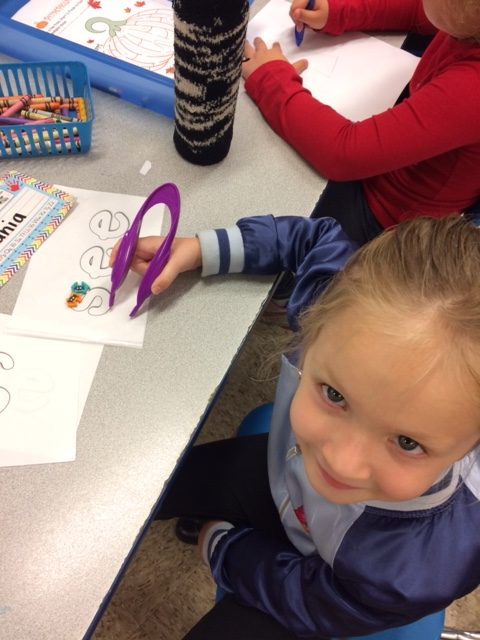
Using tweezers to pick up fun little objects is another great way to develop fine motor skills. You can find these plastic tweezers in so many shapes and sizes. You can find them at the dollar store, amazon, and sometimes at Target. Click here to grab the kind you see in the picture.
10. Q-Tip Painting

You know that kids love when pain is involved! They simply use a tip of a cotton swab to paint objects using little dots!
This promotes the correct pencil grip and allows the kids muscles to work in a similar way necessary for neat handwriting.
The activity you see in this picture was from https://differentiatedkindergarten.com/. If you’ve never checked out her blog…you are missing out. She has so many amazing ideas and resources for fine motor skill development!
This time of year parents always have a lot of questions about how to prepare their child for kindergarten. Providing them with activities to develop their motor skills will take them so far. This is something that is developmental and happens differently for every child. We can help them along by providing activities such as these!
Comment below with any questions about this or if there is something you would like to know more about. I would love to do more blog posts on topics that interest you.
Please share this post with anyone that you feel would benefit!


